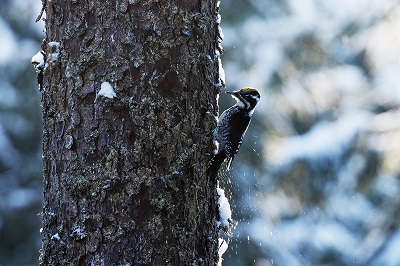Funding for Estonian nature conservation comes mainly from the European Union funds and the state budget

Funding for Estonian nature conservation comes mainly from the state budget and various European Union funds. The main sources of funding are the European Agricultural Fund for Rural Development (EARDF), the European Regional Development Fund (ERDF), the Cohesion Fund, and the LIFE programme. Estonia has been able to apply for and use these funds effectively, especially in the 2014–2020 funding period. For example, without EU funding, maintenance support for semi-natural communities would not be as extensive. Equally important is the Natura private forest support, which helps to compensate private forest owners for lost income.
The largest impact of investments has been in the development of environmental education centres, the reconstruction of visitor management infrastructure, the restoration of protected mires, and investments related to the maintenance of semi-natural communities. In the 2014–2020 funding period, the restoration of migratory fish spawning grounds was added as an important funded activity [1]. The restoration of the habitats of the Pärnu River and its tributaries can be considered the largest nature conservation project in this period, within the framework of which, fish migration routes were opened and spawning grounds were restored in the total amount of 1,220 ha.
The nature conservation programme of the environmental programme of the Environmental Investment Centre (EIC) plays an important role in financing nature conservation. Its purpose is to protect nature to preserve its diversity, to ensure the favourable condition of natural habitats and species of wild fauna, flora, and fungi, and to preserve the natural environment of cultural, historical, and aesthetic value. The EIC’s nature conservation programme has ensured the efficiency and flexibility of nature conservation activities [1]. The EIC has supported, for example, the completion of the Estonian bird atlas and plant atlas, the conduct of surveys, the evaluation of the Red List, the restoration of semi-natural communities, the control of hogweed, etc.
The EIC finances projects from the money received from Estonian environmental charges, revenues from the sale of CO2 quotas, and the European Union structural funds. Local governments, companies, institutions engaged in environmental protection, or legal public persons can apply for support from the EIC. Read more here.
An overview of the use of funds from major EU funds, EEA grants, and the Environmental Investment Centre’s nature conservation programme in the three EU funding periods (2004–2006, 2007–2013, 2014–2020) can be found here: nature conservation funding.
Last modified: 07.12.2021
______________________________
[1] Kukk, L. 2020. Looduskaitse rahastamine. Roasto, R., Tampere, U. (toim). Eesti looduse kaitse aastal 2020. Keskkonnaagentuur, Tallinn: 75-79.